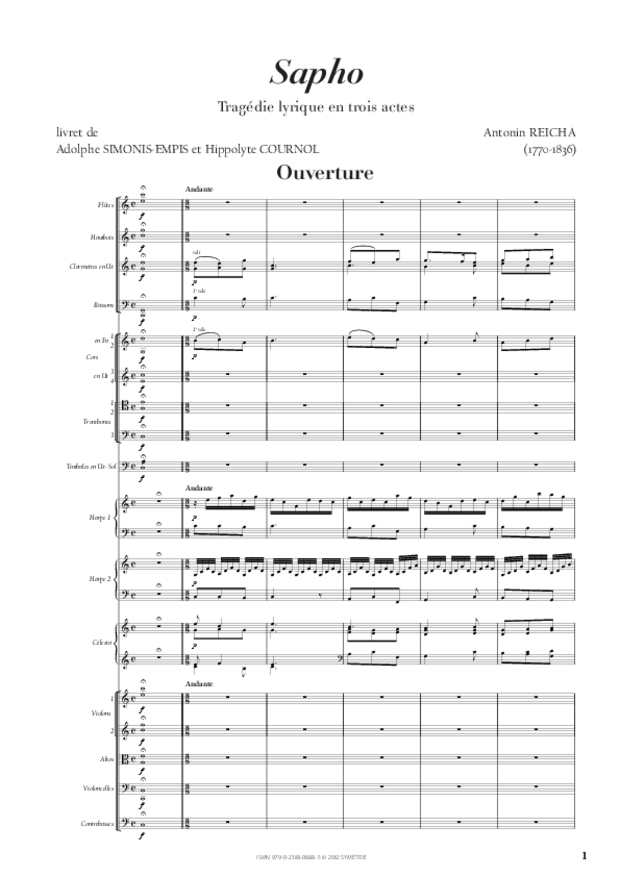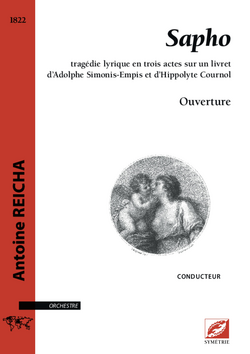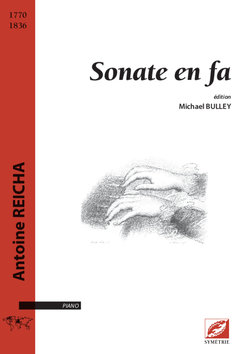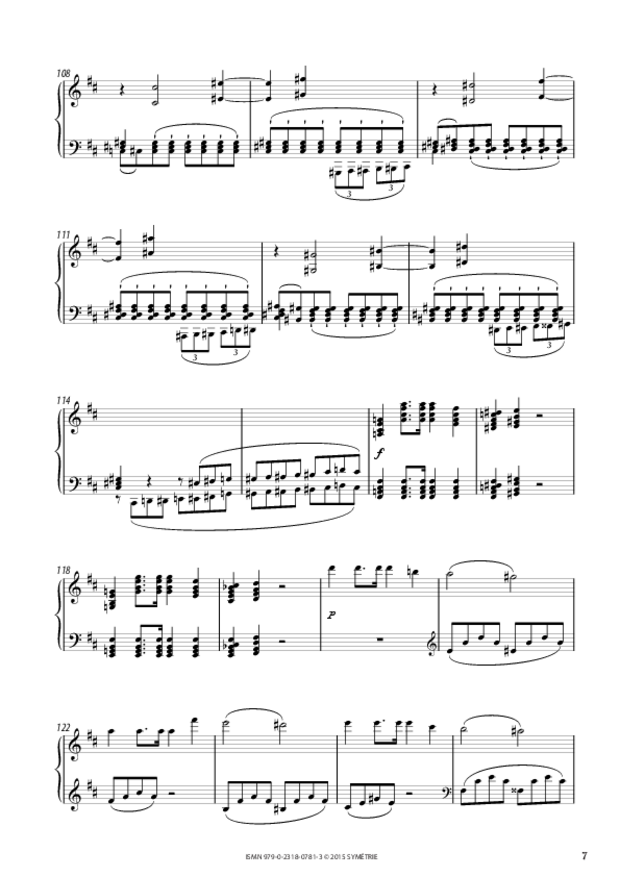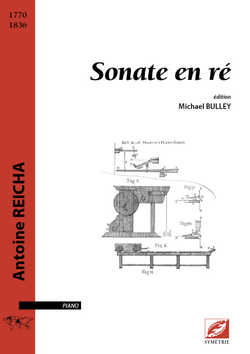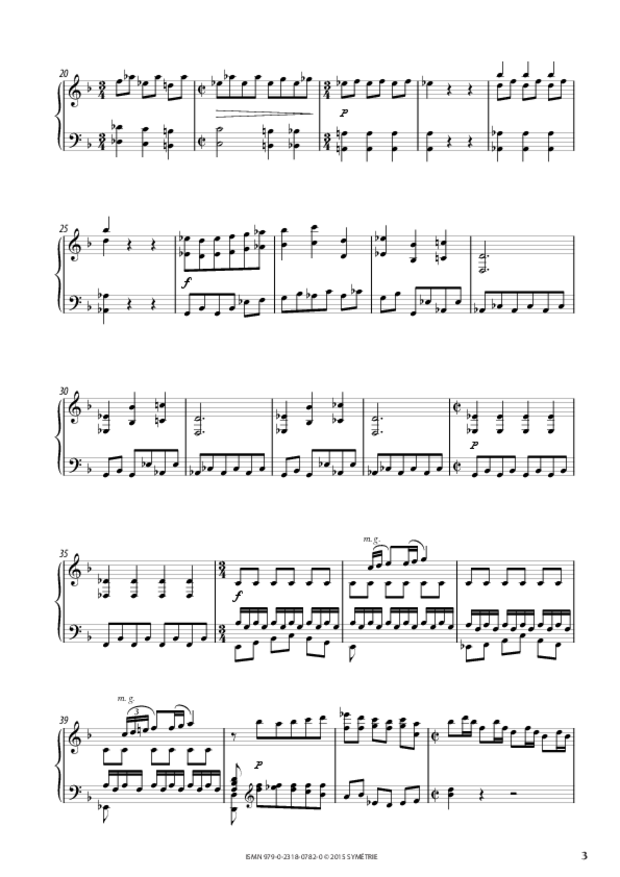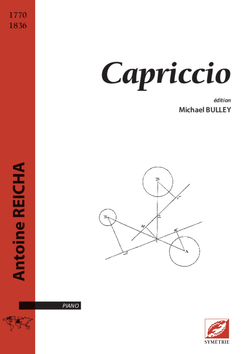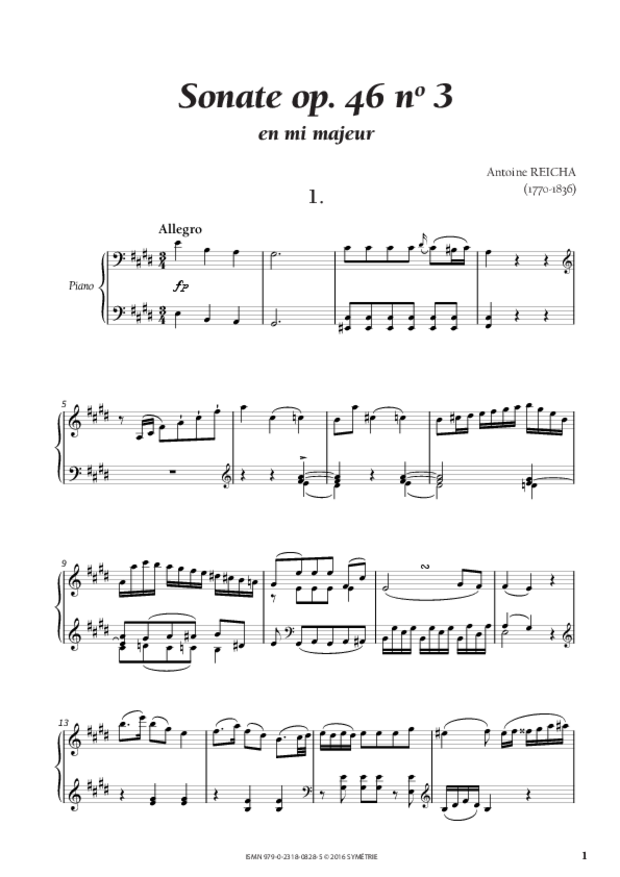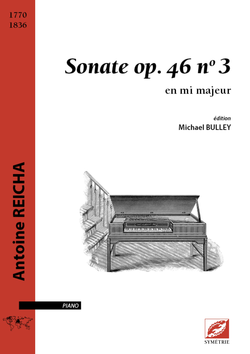This edition of the Sonata in B flat major, Op. 46, No. 2, is based on that of the Trois Sonates pour le Pianoforte (Three Sonatas for Pianoforte) published in 1804 by Breitkopf & Härtel. With the exception of the finale of the second, which is to be found in several anthologies of music for piano, these sonatas were never reissued. As for the rest of opus 46, there came a time when we reluctantly concluded that the other movements had not survived to the present, as our researches had yielded no example of the original edition nor any manuscript version of the work. Then, however, independently and almost simultaneously, Herbert Schneider and Henrik Löwenmark informed us that the Conservatoire royal de musique in Brussels possessed an example of the first edition.
Despite the date of publication and the opus number allocated to them by Breitkopf & Härtel, the three sonatas of this collection were very probably composed in the middle of the 1790s, when Reicha was living in Hamburg. Their style certainly indicates an earlier date than the three Grandes Sonates of 1803-1804. It is very likely, too, that these are the “three sonatas for piano solo” referred to by Reicha in a letter of 1797 addressed to the publishing house, Artaria. Written therefore when the composer was in his mid-twenties, these three opus 46 sonatas are quite short, each having three movements, fast-slow-fast. Their style is akin to that of the later piano sonatas of Haydn, a composer for whom Reicha had a particular admiration.
Although the influence of Viennese classicism is evident, there are already signs here of those individual traits the composer was to develop in his later works. In the words of the Swedish pianist and musicologist, Henrik Löwenmark:
“[These sonatas contain] many details, highly typical of Reicha, which reveal a different kind of mind at work: unusual textures, surprising harmonic deviations, sudden breaks in the musical flow, swift and unprepared changes of direction.”
He continues:
“Reicha both follows in the footsteps of his forerunners and at the same time plays with tradition in a very deliberate and personal manner, as if to show that there are other ways of doing things—he was no simple epigone and inevitably sets his stamp on the result.”
Press reviews
Over a hundred of Reicha’s compositions have been published and a great number still remain in manuscript, among which many are of the highest importance to the art of music.
Hector Berlioz, Journal des débats, 3 July 1836
Audio Excerpts

I. Allegro vivace
II. Andante un poco adagio
III. Finale : Poco presto
Contents
- 1 – Allegro vivace
- 2 – Andante un poco adagio
- 3 – Finale. Poco presto
